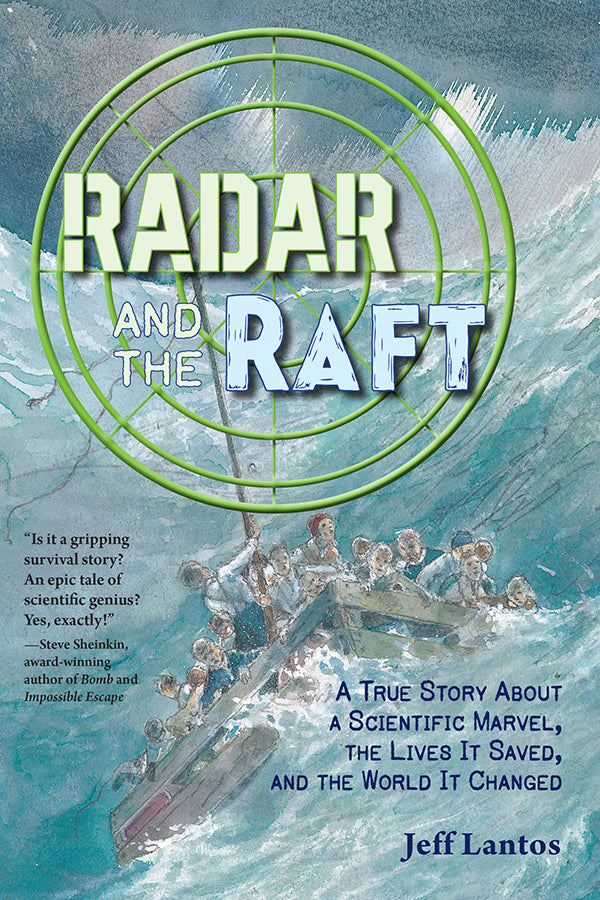Radar and the Raft

Jeff Lantos, author
Jeff Lantos was a fifth-grade teacher in Pacific Palisades, California, where he often wrote history-based musicals for his students to perform. He still often works with schoolkids and history-based productions. A UCLA study showed that his students' retention of history is higher than their peers. He was nominated for a 2015 Excellence in Theatre Education Award from the Tony Awards and Carnegie Mellon University. He holds a degree from Brown University and has worked producing musicals on Broadway.
Read more about Jeff.
- A Junior Library Guild Gold Standard selection
- Bank Street College Best Children's Books of the Year 2025
Interwoven storylines link a triumphant technological advance with a harrowing tale of survival at sea.
Kirkus Reviews, starred review
In a real pleaser for readers with an expansive range of interests, Lantos twines a meaty account of the invention of radar with the story of how that device came into play in rescuing a raft crowded with the survivors of an American cargo ship torpedoed weeks before by a U-boat in shark-infested waters. He traces the history of radar from 18th-century Italian anatomy professor Luigi Galvani’s experiments with twitching frog legs to the powerful detection device that gave the Allies a significant, perhaps even decisive, advantage in World War II. Lantos also tells some absorbing side stories along the way. He not only describes the development of electromagnetic theory in specific but largely non-mathematical terms, but also—drawing from eyewitness accounts of raft survivors who were Christian missionaries returning from Ivory Coast—vividly captures the perils faced by those deemed enemy foreigners, trapped in countries suddenly under Nazi control. Likewise notable are his follow-up passages on radar’s myriad offspring from microwave ovens to GPS, as well as thrilling mentions of the still-unrecovered $50 million in Congolese gold that went down with the torpedoed cargo ship. The illustrations mix old photos and documents with Marks’ watercolor views of figures in West African and nautical settings in a mishmash that somehow suits the broad range of themes and topics. The bibliography and endnotes are likewise admirable in both bulk and scope.
A rare and exhilarating mix of hard science and seagoing terror.
LiveSCIENCE
The story of radar, its inventors and contributing scientists are combined in this true story about the technology’s emergence and lifesaving uses. Written for readers around the ages of 10 to 13, "Radar and the Raft" is for those with an interest in history and technology.
Unlike many technology-based non-fiction books, this story largely focuses on the people and families behind the technology, as well as life during World War II. The book includes a combination of character storylines and multiple scientific discoveries, intriguing the reader as to how they will connect together. Toward the end of the book, these stories and inventions meet in a dramatic scene that demonstrates the lifesaving potential of science.
"Radar and the Raft" grips readers through both personal stories and the evolution of technology. By connecting the story of the Bell family’s near-death experience at sea during World War II with the story of radar’s discovery, the author has produced an engaging and informative storyline. This is a great read that explores the direct consequences of scientific discoveries.
Hardcover
ISBN: 978-1-62354-345-7
Ages: 10 and up
Page count: 192
6 x 9
Publication date: September 24, 2024





